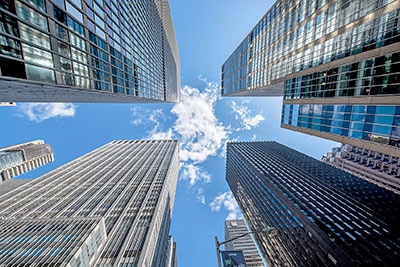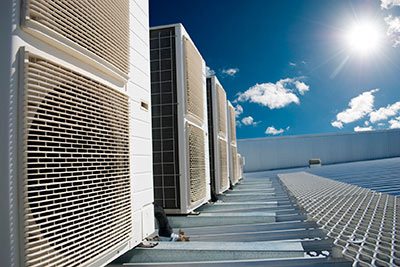 A large commercial HVAC system is remarkably complex. They not only help manage the indoor temperature, but also intake air from the outside, eliminate contaminated air through an exhaust or filtration system, and manage energy.
A large commercial HVAC system is remarkably complex. They not only help manage the indoor temperature, but also intake air from the outside, eliminate contaminated air through an exhaust or filtration system, and manage energy.
Key Questions to Define Your HVAC System
Every HVAC system has basic components in common, although there are many ways to implement and optimize them. When evaluating an HVAC system, keep in mind these elements that contribute to performance:
- What fuel is used for heating – electricity? Oil? Gas?
- What’s the coolant – chiller? Gas air conditioner? Electric heat pump or air conditioner?
- How is the heat or cooling delivered through the space? Ducted air? Water system?
- What kind of ventilation approach is used? Is there a dedicated ventilation system?
While many large HVAC systems mix and match various components, it’s a good idea to go through this checklist before any work is done on the system. This way, you know what you’re dealing with and can recognize common points of fault.

HVAC System Function in Large Buildings
How does it all come together?
Let’s imagine the cooling cycle in a common HVAC system:
- The compressor compresses refrigerant, increasing its pressure and temperature.
- Hot, outside air is blown over the refrigerant vapor by the condenser to liquefy it.
- The expansion valve changes refrigerant into a low-pressure liquid, thus cooling it.
- Heat is transferred by the evaporator to transform the cool liquid to a warmer gas.
No matter how big your building, basic concepts remain the same, though the using of cooling towers and “free cooling” can make things more complex. In an electrical system, the heating cycle is very similar to the cooling cycle.
Types of Commercial HVAC Systems
Commercial structures can benefit from a number of interconnected systems that provide heating and cooling to individual floors or other areas.
Some solutions you may see in a large-scale commercial HVAC system include:
- Heat Pumps: Extracts heat from air or water for heating – like a refrigerator in reverse. In a water source heat pump, a pipe carries water through the structure to supply the heat pump.
- Roof Top Units: These units are found on the roof or ground and duct the conditioned air into the space. They’re very common in commercial HVAC applications in New York.
- Chillers: These generate cool water distributed to air cooling coils via piping systems.
- Heaters: These come in two types – common hot air furnaces that burn fuel to heat the air, and radiant heaters that use invisible infrared radiation to heat objects directly.
This is just a quick summary. A well-maintained commercial HVAC system is a true engineering feat – versatile, effective, and efficient! To learn more, contact Donnelly Mechanical today.